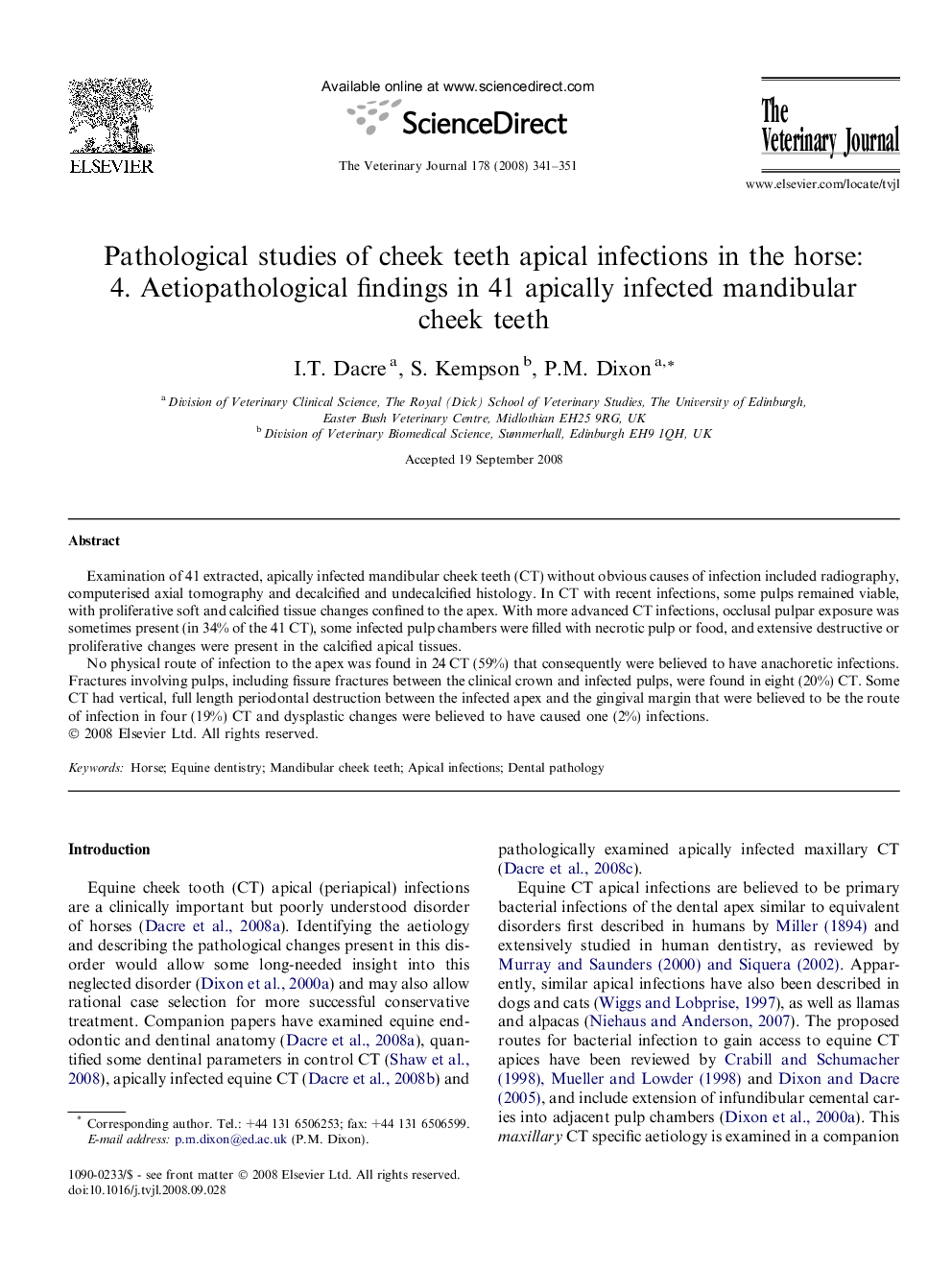| Article ID | Journal | Published Year | Pages | File Type |
|---|---|---|---|---|
| 2465800 | The Veterinary Journal | 2008 | 11 Pages |
Examination of 41 extracted, apically infected mandibular cheek teeth (CT) without obvious causes of infection included radiography, computerised axial tomography and decalcified and undecalcified histology. In CT with recent infections, some pulps remained viable, with proliferative soft and calcified tissue changes confined to the apex. With more advanced CT infections, occlusal pulpar exposure was sometimes present (in 34% of the 41 CT), some infected pulp chambers were filled with necrotic pulp or food, and extensive destructive or proliferative changes were present in the calcified apical tissues.No physical route of infection to the apex was found in 24 CT (59%) that consequently were believed to have anachoretic infections. Fractures involving pulps, including fissure fractures between the clinical crown and infected pulps, were found in eight (20%) CT. Some CT had vertical, full length periodontal destruction between the infected apex and the gingival margin that were believed to be the route of infection in four (19%) CT and dysplastic changes were believed to have caused one (2%) infections.
